Once you enter to the Data Exports product you get immediately introduced to the Data Exports's Overview Menu, where all the Data Exports that are created appear. There it is listed all the necessary information to immediately attest what you are going to do next.
Let's now introduce each section of the Data Exports Overview Menu
(by the counter in the image below):

1- Data Exports button.
By clicking it the Data Exports Overview Menu will appear.
2- Data Exports Grid.
In this data table you can find all the necessary information about each Data Exports like:
- Name of the Data Exports .
- Triggers. It shows how many time this Data export has been triggered.
- Starred. You might click the star and make it yellow. This way you can filter by starred or just find it easy visually.
- Type. It shows which type is this Data Export destination table/file (CSV, Excel, Google Sheets, BigQuery, Amazon S3, ODS).
- Tags. By clicking the + sign you can easily add tags.
This can help visually find the Data Exports or you might as well filter them by clicking in the tags column filter.
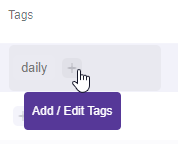
- Last used. Shows the last time when the Data Exports was opened by a user.
- Rows. It shows how many rows does the destination table have.
- Latest Job. Shows the status of the latest Job (Ready, Not Imported, Invalid)
- Description. Shows the description you have put on this exports . By clicking the + sign you can easily add a description.
- Last valid Job. Shows the latest time that the job was successful (Status ready).
Important Note: Every column can be filtered and ordered by.
If you want to order by simply click on the header of the column until an arrow up and down appears:

If you want to filter, then just hover to the column header and click the button that appears:
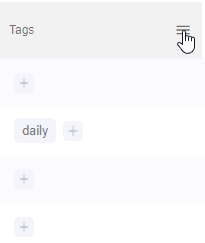
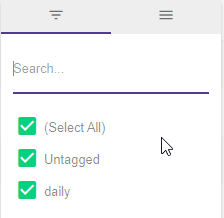
3- Search for Data Exports.
Here you can search for Data Exports by simply typing the name of it.
4- Add..
With this button you can add a new Data Exports. Simply click it and follow the steps to create one.
5- Filters.
By clicking the filters button it opens a quick overview of the columns vertically.
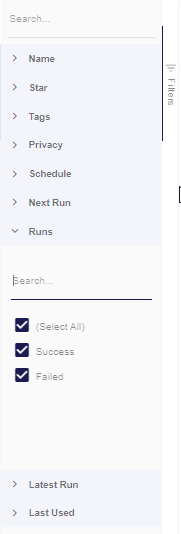
6- Views.
This is a very Handy helper so you can jump directly to some preset filters like:
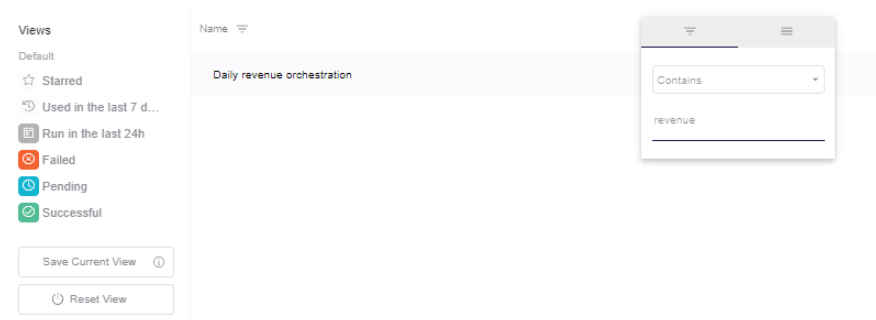
But what is even more powerful is the fact that you might create your personalized views, by simply following these steps:
I.- Filter or Order by any column.
Here for example I will filter with the name revenue:
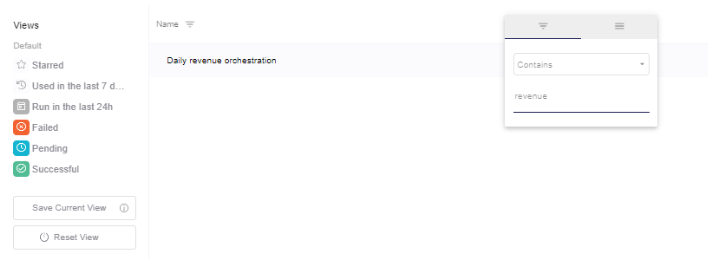
II. - Click "Save Current View" button.
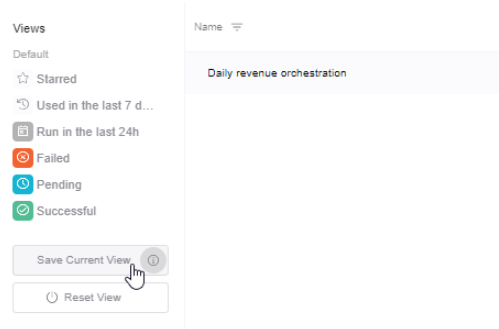
III. - Add the View a descriptive name and/or icon &color and click Save.
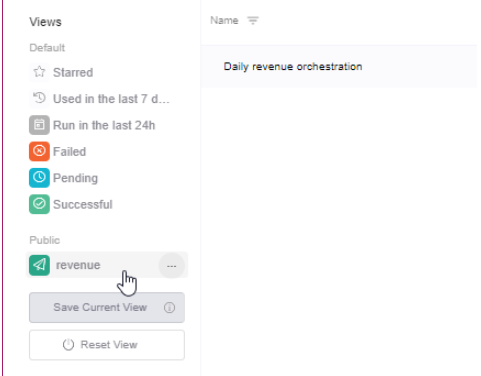
IV- If you want to jump back to the default view of all the Data Exports, simply click the "Reset View" button.